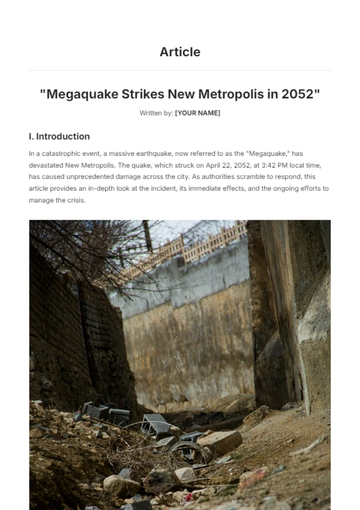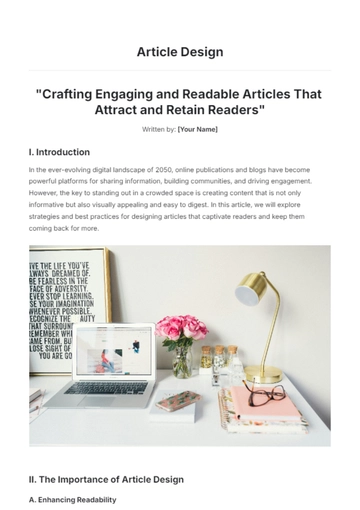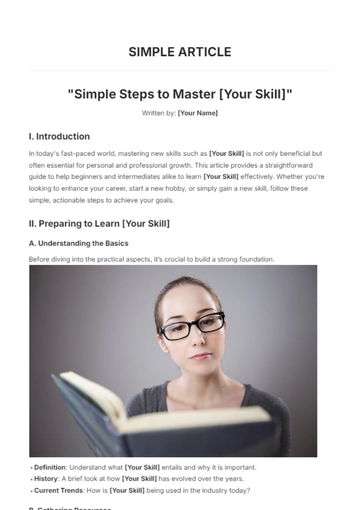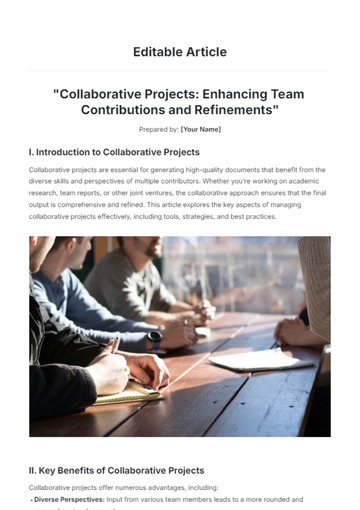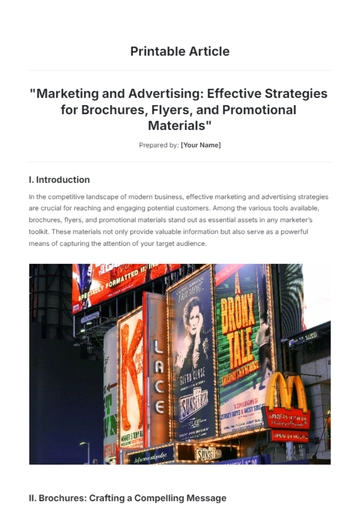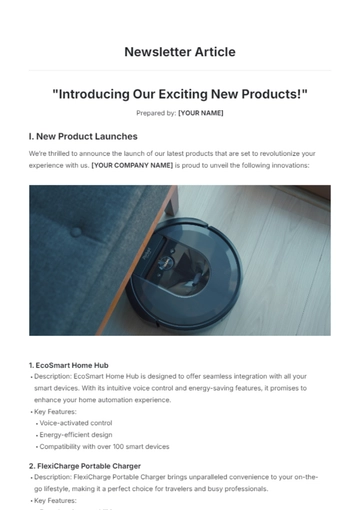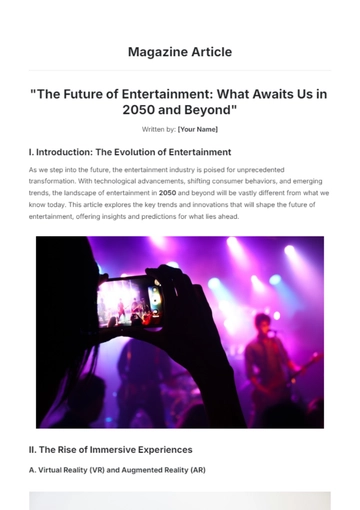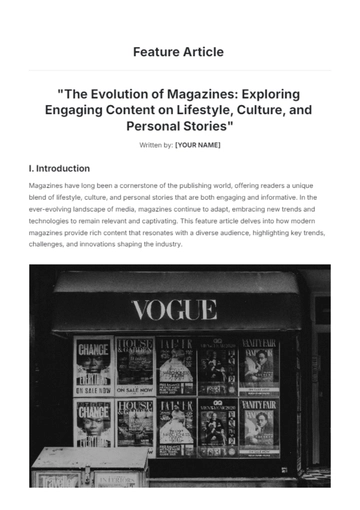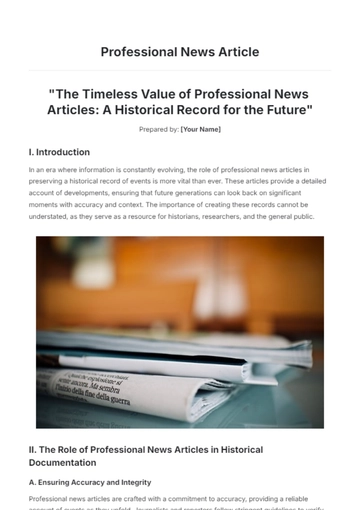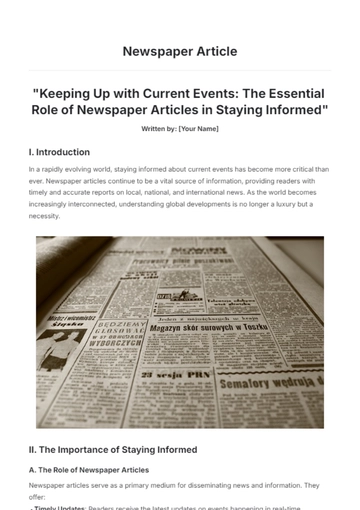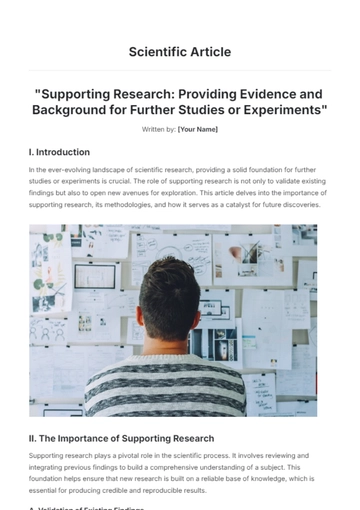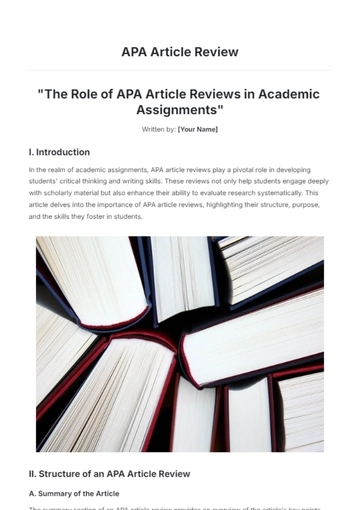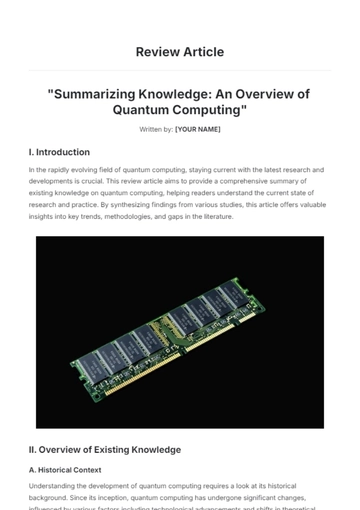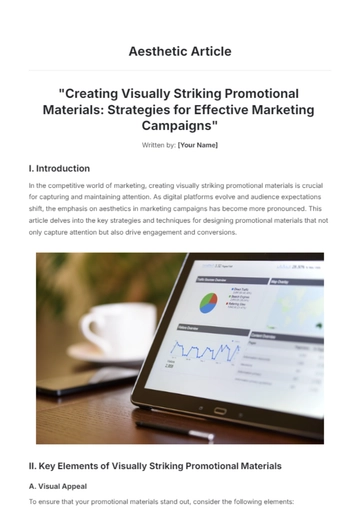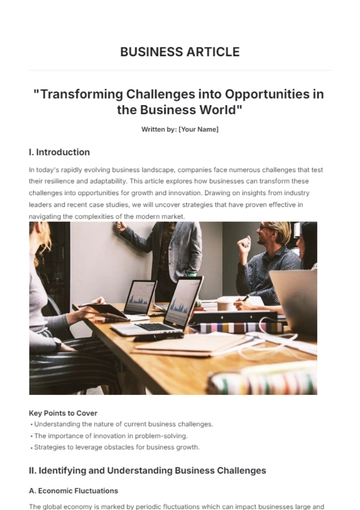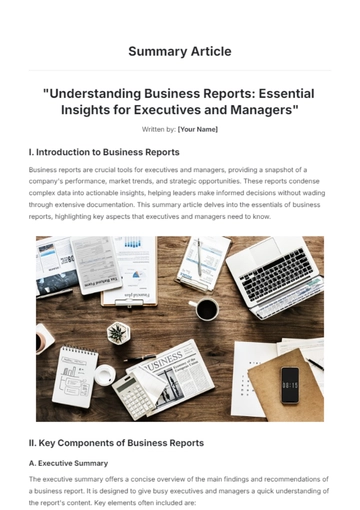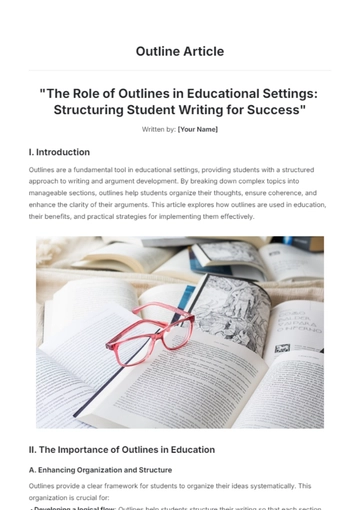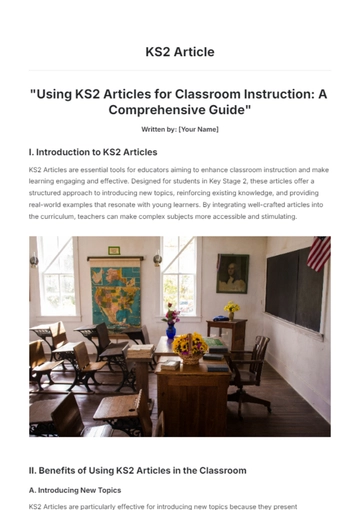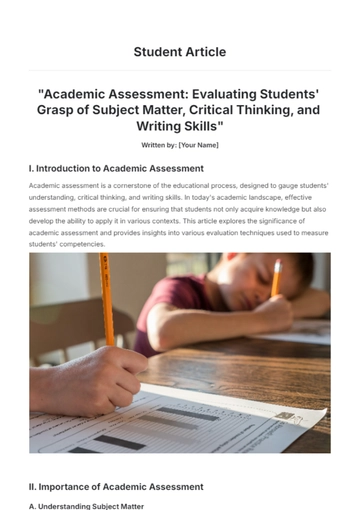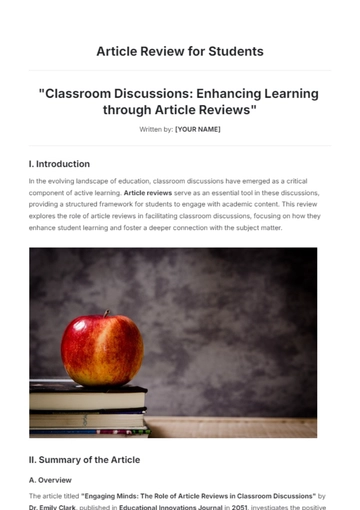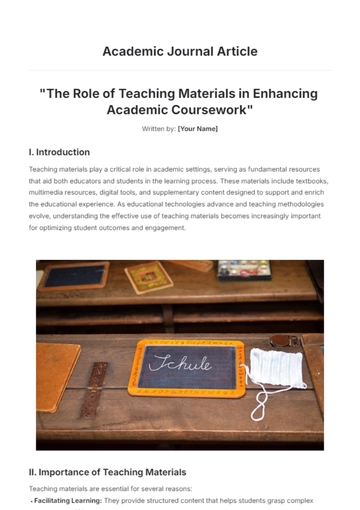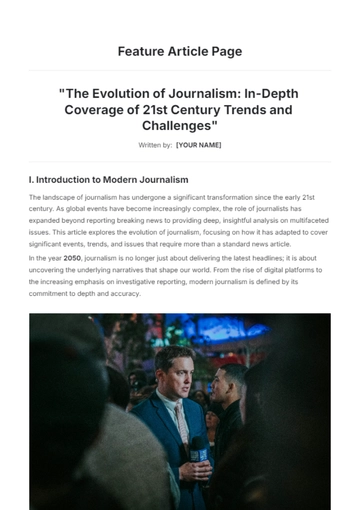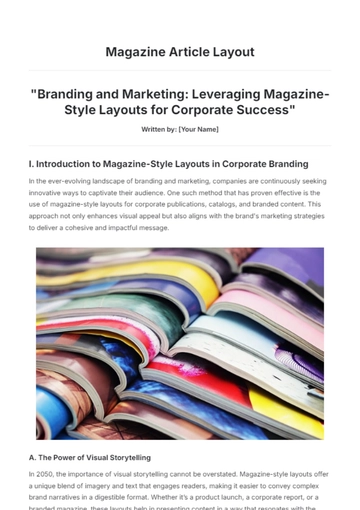Free Viability Study Journal Article
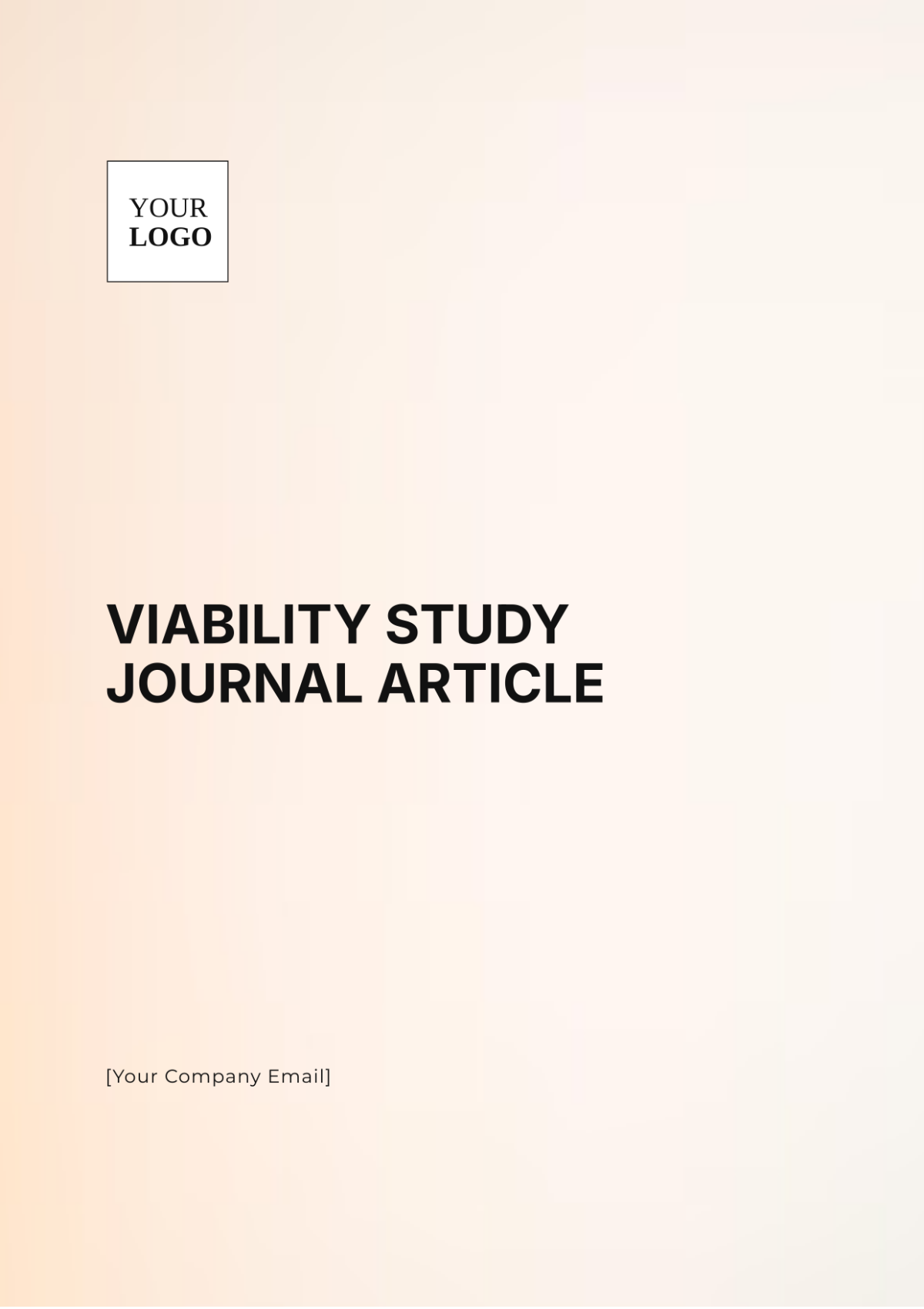
Prepared by: [Your Name]
Date: [Date]
1. Abstract
This article presents a comprehensive viability study aimed at assessing the feasibility of emerging technology ventures in 2052. The study employs a multi-faceted approach, incorporating financial analysis, technical feasibility, market potential, and operational considerations. The findings provide insights into the viability of new technologies, such as quantum computing and advanced bioengineering, offering guidance for stakeholders involved in technology investments and development.
2. Introduction
In the year 2052, the pace of technological innovation has reached unprecedented levels, making it essential to evaluate the feasibility of emerging technology ventures accurately. This study focuses on assessing the viability of ventures in quantum computing and advanced bioengineering. By examining financial, technical, market, and operational factors, the study aims to provide a detailed analysis to guide strategic decisions and investment choices.
3. Literature Review
The literature review explores existing research on technology viability studies, with a focus on recent advancements and methodologies. Key themes include:
Financial Analysis: Recent studies have emphasized the importance of advanced financial modeling techniques, including predictive analytics and blockchain-based financial management (Smith et al., 2050).
Technical Feasibility: Research highlights the rapid advancements in quantum computing and bioengineering technologies, including breakthroughs in quantum algorithms and synthetic biology (Chen & Patel, 2052).
Market Potential: Analysis of market trends reveals a growing demand for quantum computing solutions and personalized medicine, with significant investment from both private and public sectors (Thompson & Edwards, 2051).
4. Methodology
The methodology section details the approach used to conduct the viability study:
Data Collection: Data were gathered from a variety of sources, including market reports from the International Quantum Computing Association (IQCA) and the Global Bioengineering Consortium (GBC), as well as interviews with industry experts and financial analysts.
Analytical Framework: The study utilized a combination of financial forecasting models, technical readiness assessments, and market analysis frameworks. Techniques included Monte Carlo simulations for financial projections and SWOT analysis for market evaluation.
Evaluation Criteria: Criteria for assessing feasibility included cost-benefit analysis, technological readiness levels (TRL), market demand metrics, and operational risk assessments.
5. Results
The results section presents the findings from the study:
Financial Analysis: The projected initial investment for quantum computing ventures is approximately $2.5 billion, with an expected ROI of 18% over ten years. Advanced bioengineering projects require an initial investment of $1.8 billion, with a projected ROI of 22% (2052).
Technical Feasibility: Quantum computing technologies have achieved TRL 7, indicating that prototype systems are operational. Advanced bioengineering technologies are at TRL 6, with pilot systems showing promising results (2051).
Market Potential: The market for quantum computing is expected to grow at a CAGR of 25% over the next decade, driven by demand in cryptography and data processing. The bioengineering market is projected to grow at a CAGR of 30%, fueled by advancements in personalized medicine and regenerative therapies (2052).
Operational Considerations: Key challenges include the need for specialized infrastructure for quantum computing and regulatory hurdles for bioengineering applications. Proposed solutions include partnerships with research institutions and compliance strategies for regulatory approval (2051).
6. Discussion
The discussion interprets the results and their implications:
Feasibility Assessment: Both quantum computing and advanced bioengineering ventures demonstrate strong feasibility, with substantial market potential and positive financial projections. However, technical and operational challenges need to be addressed to maximize success.
Strategic Recommendations: To enhance feasibility, it is recommended to focus on strategic partnerships, secure funding from diversified sources, and implement robust risk management practices. Additionally, accelerating technological development and regulatory approvals will be crucial for successful implementation.
Implications for Stakeholders: Investors and policymakers should consider the long-term benefits and risks associated with these technologies. The findings suggest that proactive engagement with emerging technologies can yield significant returns and drive innovation in various sectors.
7. Conclusion
The study concludes that emerging technology ventures in quantum computing and advanced bioengineering hold substantial promise for the future. By addressing identified challenges and leveraging strategic opportunities, stakeholders can enhance the viability of these technologies and contribute to their successful adoption. Future research should focus on further refining feasibility models and exploring additional technological innovations.
8. References
Chen, L., & Patel, R. (2052). Advancements in Quantum Algorithms. Quantum Computing Review, 15(2), 134-150.
Smith, H., et al. (2050). Blockchain-Based Financial Management. Journal of Advanced Finance, 22(1), 88-105.
Thompson, J., & Edwards, R. (2051). Market Trends in Quantum Computing and Bioengineering. Technology Market Analysis, 17(2), 55-70.
- 100% Customizable, free editor
- Access 1 Million+ Templates, photo’s & graphics
- Download or share as a template
- Click and replace photos, graphics, text, backgrounds
- Resize, crop, AI write & more
- Access advanced editor
Introducing the Viability Study Journal Article Template from Template.net. This editable template is fully customizable, allowing you to tailor it to your research needs. Easily modify text and structure with our Ai Editor Tool for a seamless writing experience. Ideal for crafting detailed, professional journal articles with precision and ease.
